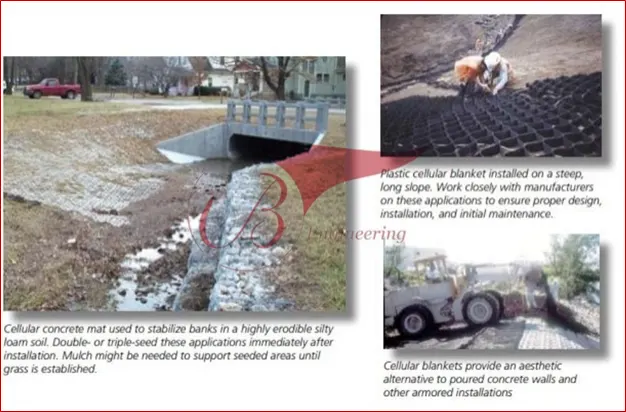The foundation of slope protection is generally arranged on favorable sub grade, and drain holes are made according to relevant requirements so as to prevent spalling and collapse of the slope due to rain scouring or weathering.
Protecting slopes from erosion requires several actions that must be taken together. No single approach will be successful, especially if the slope is steep or has highly erodible soils (see below).
JB Engineering uses one or more of the following actions to reduce erosion on slopes:
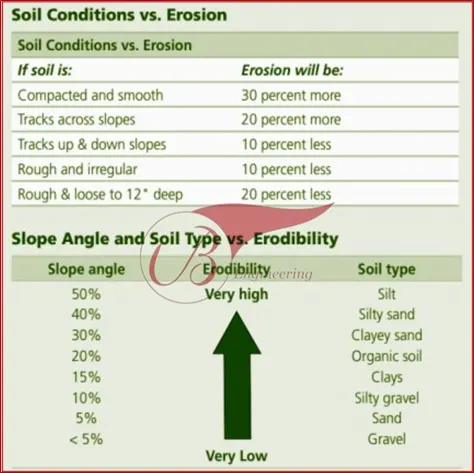
A silt fence is a temporary sediment barrier consisting of filter fabric entrenched into the soil and attached to supporting posts. Silt fences are downhill from bare soil areas and are installed with a trencher or by a slicing machine to prevent against common silt fence failures.
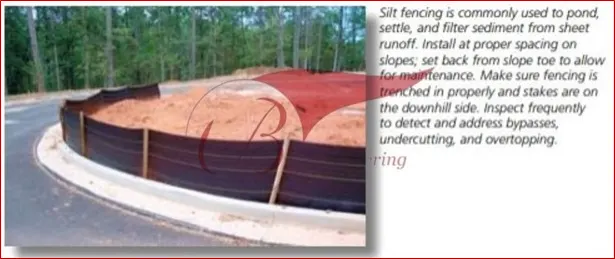
Silt fences are common sediment control devices. Silt fencing should be installed where sediment-laden water can pond, thus allowing the sediment to fall out of suspension and separate from the runoff. Runoff will also bleed through the silt fence fabric, providing physical filtering for larger sediment particles. Reasons for the high failure rate of improperly designed (located) and installed silt fence include:
Brush, rock, and other commercial barriers can be used as a temporary sediment barrier instead of a silt fence.
The purpose of any sediment barrier is to provide a place where sediment-laden water can pond, thus allowing the sediment to fall out of suspension and separate from the runoff.

Temporary erosion control blankets (ECBs) and permanent turf reinforcement mats (TRMs), known generally as rolled erosion control products are single or multiple layer sheets composed of natural or synthetic material that is woven, sewn, bonded, or otherwise manufactured for placement on bare soil slopes or flow channels. They have been described as a temporary, degradable products composed of processed natural or polymer fibers mechanically, structurally, or chemically bound together to form a continuous matrix to provide erosion control and facilitate vegetation establishment.

Erosion control blankets (ECBs) are used to temporarily stabilize and protect disturbed soil from raindrop impact and surface erosion, to increase infiltration, decrease compaction and soil crusting, and to conserve soil moisture. Mulching with ECBs will increase the germination rates for grasses and legumes and promote vegetation establishment. ECBs also protect seeds from predators; reduce desiccation and evaporation by insulating the soil and seed environment.
Some types of ECBs and turf reinforcement mats are specifically designed to stabilize channelized flow areas. These blankets and mats can aid the establishment of vegetation in waterways and increase the maximum permissible velocity of the given channel by reinforcing the soil and vegetation to resist the forces of erosion during runoff events. Stems, roots and rhizomes of the vegetation become intertwined with the mat, reinforcing the vegetation and anchoring the mat.
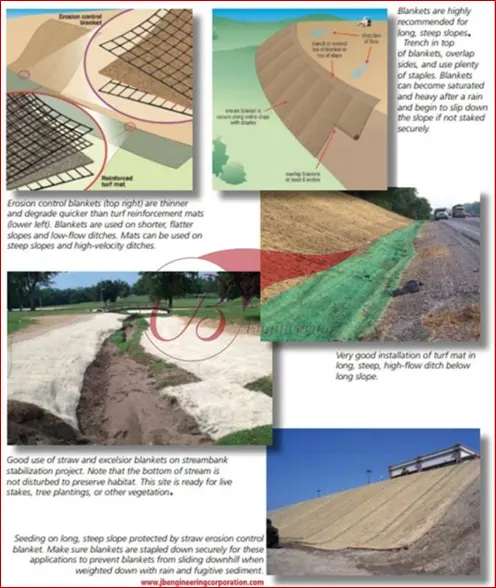
A temporary slope drain is a pipe or lined (TRM, rock, or concrete) ditch or channel extending from the top to the bottom of a cut or fill slope during the construction period.
Temporary slope drains serve to convey concentrated runoff down the face of a cut or fill slope without causing erosion. They are generally used in conjunction with diversions to convey runoff down a slope until permanent water management measures can be installed.
Inspect slope drains and supporting diversions weekly and after every significant rainfall and promptly make necessary repairs. When the protected area has been permanently stabilized, temporary measures can be removed, materials disposed of properly, and all disturbed areas stabilized appropriately.

Gabions are rectangular galvanized wire baskets filled with stones used as pervious, semiflexible building blocks for slope and channel stabilization. Live rooting branches can be placed between the rock-filled baskets.
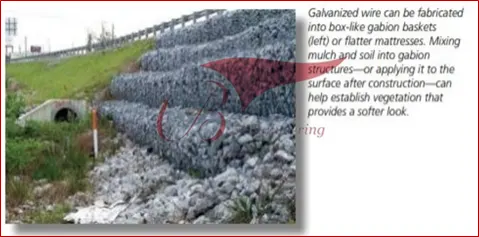
Gabions protect slopes and stream banks from the erosive forces of moving water. Rock filled gabion baskets or mattresses can be used as retaining walls for slopes, to armor the bed or banks of channels, or to divert flow away from eroding channel sections. Rock-filled or vegetated rock gabions are used on stream bank sections subject to excessive erosion because of increased flows or disturbance during construction.
Gabions can be specified where flow velocities exceed 6 feet per second and where vegetative stream bank protection alone is not sufficient. Gabions can be used to construct deflectors or groins intended to divert flow away from eroding stream bank sections. Gabions are also used to construct retaining walls and grade control structures.

A cellular confinement system (CCS) is a three-dimensional, honeycombed, sheet, mat, or interlocking structure filled with soil and planted with vegetation used to stabilize the surface of earthen cut and fill slopes.
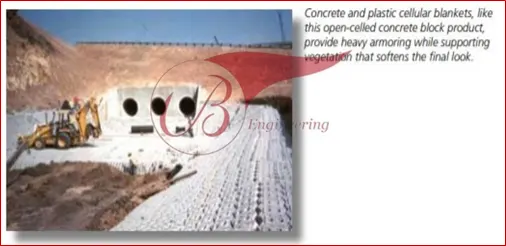
CCSs are permanent erosion control practices intended to stabilize infill materials for slope and channel protection, load support, and earth retention applications. The expandable panel creates a cellular system that confines topsoil infill, protects and reinforces the plant’s root zone and permits infiltration and natural subsurface drainage. The honeycomb shaped cells encapsulate and prevent erosion of the infill material. The cellular confinement systems are used for
